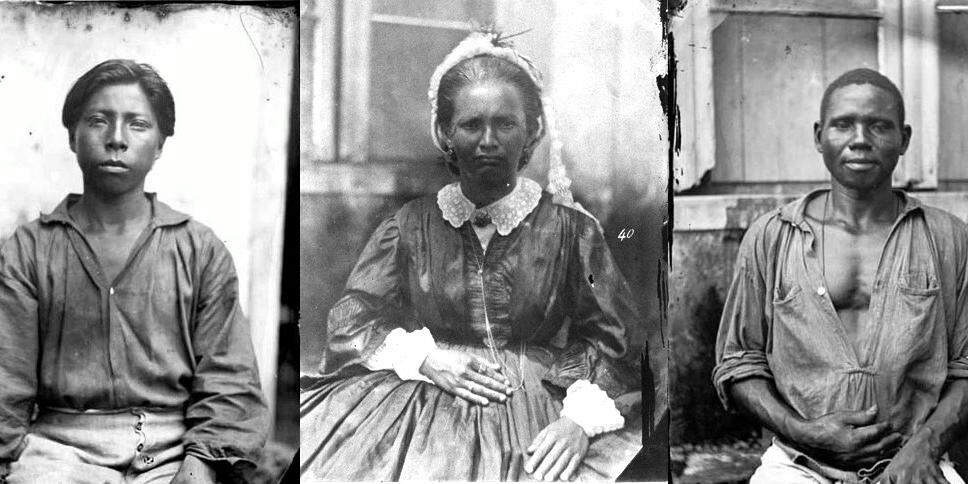Legal Amazon: less than 5,08% of congressmen in the region's states are black
Survey was carried out by Redação Integrada de O Liberal [O Liberal Integrated Newsroom] considering data from Tribunal Superior Eleitoral (TSE) [Superior Electoral Court]. Number potentializes the history of racism and racial discrimination of a country that has always denied the color of its people
The Instituto Brasileiro de Geografia e Estatística (IBGE) [Brazilian Institute of Geography and Statistics] performs researches on the color or race of the Brazilian population based on self-declarations, that is, by asking which group the person considers themselves belonging to, among the following options: white, black, pardo [from mixed races], indigenous or yellow. According to data from the 2019 Pesquisa Nacional por Amostra de Domicílios (Pnad) [National Household Sample Survey], 42.7% of Brazilians declared themselves white, 46.8% as pardo, 9.4% black and 1.1% as yellow or indigenous. Within this classification, blacks and pardos are the segments considered the ones which constitute the black people, but this identity construct is much more complex. It is directly influenced by the entire history of racism and racial discrimination in Brazil – a country that has always denied the color of its people.
“Pardo was a racial division created in Brazil. It has its origins in the history of Brazilian racism, which is characterized by the phenotype: “In Brazil, the more black-distinctive phenotypic a person exhibits, the more discriminated he/she is”, explains Zélia Amador de Deus, co-founder of Centro de Estudos e Defesa do Negro do Pará (Cedenpa) [Center for Studies and Defense of Blacks in Pará] and coordinator of the Assessorship for Diversity and Social Inclusion (Adis), at the Federal University of Pará (UFPA).
Listen to the comment on this news:
“There are those people who, despite being black descendants, have been getting lighter because of the whitening project in Brazil. Along such process, the one that is somehow more accepted by society is born: the pardo, that is, the pardo color is born”, says the emeritus teacher.
In Brazil, the low proportional representation of black people in the political sphere is just another proof of inequality, which is even more striking within the Legal Amazon, a territory composed of nine Brazilian states where a large part of the country's black and indigenous populations lives and, even so, the vestiges of prejudice remain evident. Although the region is home to 12.66% of black people in Brazil, according to IBGE data for 2018, a survey carried out by Redação Integrada de O Liberal [O Liberal Integrated Newsroom], considering data from Tribunal Superior Eleitoral (TSE) [Superior Electoral Court] shows that only 5,08% of the lawmakers from the National Congress in office for the states of the Legal Amazon are black, adding up to six of the 118 congressmen from Acre, Amapá, Amazonas, Maranhão, Mato Grosso, Pará, Rondônia, Roraima and Tocantins.
Among the senators, of the 27 current representatives of these states, there are only two blacks in office, one in Maranhão and the other in Roraima, which results in a percentage of 7.4% of the total. In Acre, Amazonas and Tocantins, for example, there are only white senators, while in the other six states there is at least one pardo or black senator making up the political panel. As for federal deputies, there are 91 currently in office in the region. Of this total, only four are black: two in Maranhão, one in Rondônia and another in Pará. In other words, black federal deputies represent 4.39% of all that number. Considering 46 politicians who are of ethnicity other than white (50.54%), there is also one indigenous (1.09%) and 41 pardos (45.05%).
 (Walter Hunnewell, Manaus, 1865)
(Walter Hunnewell, Manaus, 1865)Zélia Amador, who was involved in the process of creating the quota system for blacks in universities, advocates that, more important than considering oneself part of a group is to have, in crucial positions, people who make decisions and are more engaged with policies that serve vulnerable groups in the country. “We need representatives who are working for the racial cause. We cannot have people who, despite being black or pardo, are not putting the racial issue at the center of their policies. It is not just about understanding oneself as a black person, but about being effectively in the struggle to improve the conditions of the black population in the country”, says Professor Amador, who also emphasizes that the real change comes from a deeper perception of Brazil about itself.
“Unless a society does not admit itself as ‘racist’ and does not arm itself to fight racism, the situation will remain the same. The lack of black people occupying important positions in the various segments and powers of the State is harmful to society. A society in which power is not equally distributed into all its portions is a society that cannot be considered democratic, one that does not value its social groups. It is a sick, violent and flawed society”, declares Zélia Amador de Deus.
 Zélia Amador participated in the creation of the quota system for blacks (Márcio Nagano / O Liberal)
Zélia Amador participated in the creation of the quota system for blacks (Márcio Nagano / O Liberal)The Africans arrival in the Amazon
The presence of blacks in Brazil, and especially in the Amazon, has been highly noticeable since the beginnings of the European occupation in the Americas. There are records of Africans being trafficked to the region since the end of the 17th century, with the volume increasing exponentially in the following decades. Even today, the streets of Belém display sites directly linked to this slavery past.
In the second half of the 18th century, the Africans’ and enslaved African descendants’ number had reached 30% to 40% of the population in Belém, since the census at that period used to consider only two kinds of groups in the city: free and enslaved people" - Barbara da Fonseca Palha, historian.
At the end of the 17th century, on the borders of Belém, (still as a colony) with the jungle, the blacks erected a chapel in honor of Nossa Senhora do Rosário dos Homens Pretos in the area donated for the construction of a specific religious cult temple for slaves. In addition, Travessa dos Mirandas (now Avenida Presidente Vargas) was extended into the woods and, in the end, a huge clearing was opened in the place that is now known as Praça da República (formerly, Largo da Campina) to serve as a cemetery for the enslaved. However, much of this history is lost, and few of those who visit the tourist attractions of the capital know about it.
 Barbara da Fonseca Palha specializes in the history of slavery in Pará (Márcio Nagano / O Liberal)
Barbara da Fonseca Palha specializes in the history of slavery in Pará (Márcio Nagano / O Liberal)“Since the second half of the 18th century and the early decades of the 19th century, Africans were brought from the region of Cape Verde islands, Bissau and Cacheu, that is, located in the western part of the African continent. Other groups used to come from the ports in the western central region, such as Angola and Congo”, explains the historian Barbara da Fonseca Palha, author of the doctorate thesis “Escravidão de origem Africana em Belém: um estudo sobre a demografia, mestiçagem, trabalho e liberdade” [African slavery origin in Belém: a study about the demography, mixed race, work and freedom]. During her doctorate degree, the researcher collected data about enslaved black people in Pará, examining registers in books, newspapers and documents, particularly the papers issued by Companhia Geral de Comércio do Grão-Pará e Maranhão [Grão-Pará and Maranhão Company], which was granted a monopoly of human trafficking. As a result of her analysis, Barbara could better understand how the process of black people occupation in the Amazon occurred.
 Nossa Senhora do Rosário dos Homens Pretos Church (Márcio Nagano / O Liberal)
Nossa Senhora do Rosário dos Homens Pretos Church (Márcio Nagano / O Liberal)“In the second half of the 18th century, the Africans’ and enslaved African descendants’ number had reached 30% to 40% of the population in Belém, since the census at that period used to consider only two kinds of groups in the city: free and enslaved people. In the first half of the 19th century, that population number had increased. During a certain period, the proportion of enslaved people compared to that of free people was slightly higher. That rate was determined considering, in addition to free people and slaves, the freed and indigenous people. So, it was a black city”, explains Bárbara, who comments about how the Africans brought to Belém were allocated within the state of Pará.
“During the Grão-Pará and Maranhão Company period, the main objective was to send the slaves to the countryside of Pará. In Belém, they used to be ‘employed’ in activities such as, sales, housework, arsenals, ship constructions. The occupations were varied. In the countryside, they were put to work in activities such as, extractives, agriculture, livestock… Within the geographical limits of Grão-Pará, there were enslaved workers from African origin in many sites, such as in Marajó archipelago, Baixo Amazonas [mesoregion in the northwest of Pará], Salgado [mesoregion in the northeast of Pará], regions experiencing economic prominence”, says the historian.
Bárbara explains that black people, at that time, fought for their freedom in different ways, resourcing, since the beginning, to the judiciary system in order to get rid of the slavery. That attitude points out the important role of the black people in the politics since the early beginnings of Pará state. People to whom freedom was promised after their lord’s death, for instance, had to require to court and fight so that right would be enforced. “There was an evident fight for freedom, in actions such as attempted escapes and the creation of Quilombo communities. Besides, there were also the actions of resistance within the system itself. In Belém, women’s participation in such claims was more intense. The enslaved person would claim to the court based on freedom laws. They would try to accomplish the “legal” freedom, recognized by the legal system. Every similar act of resistance is a political act”, explains the scholar, who works in the state educational department, trying to get her students to empower themselves by those reports.
“My main issue with my students is leading them to apprehend history and internalize it. Our syllabus is still too European centered, so we have to try to approach local and regional history with our students, so that they realize they do have a past, that the Amazon has a distinguishable presence of African origin population, and this fact has shaped our cultural, economic and political characteristics. Thinking of our city government, in our parliament, who are the black representatives? Do these students or their parents feel represented by those people who are not black? I often tell them they are about to become electors so they should understand that voting is not only standing in line and pressing a button. It is, in fact, about choosing who is going to fight for your issues and your rights”, states the historian.
There is lack of representation in the parliament
“I am the only black federal congresswoman in office in Pará. So, from a total amount of 20 chairs – 17 federal deputies and 3 senators – there is only one black woman. It is an insignificant number”, says Vivi Reais (from Psol political party). She was the most voted politician woman in the capital of Pará state and the fifth in number of votes amongst all candidates for the Municipal Chamber in 2020. In Brasília, the Brazilian federal district, she replaced Edmilson Rodrigues (Psol party), who was elected as the Mayor of Belém. She remarks this situation as a matter of urgency to work towards the decrease the current lack of representation of certain groups from the Amazon in the parliament.
 Vivi Reis is the only black woman elected in Pará (Márcio Nagano / O Liberal)
Vivi Reis is the only black woman elected in Pará (Márcio Nagano / O Liberal)“This is where the political decisions will occur, every law project is sent there, thus, how are we supposed to legislate including the majority of the population if that majority is not represented? In Pará, one of the states where there is proportionally the highest number of black people, there should be more representatives in the parliament, and that is not what really happens. There are not many black people, and, amongst them, many do not present themselves as black persons, nor do have the racial issue as a major theme”, explains Vivi.
For Vivi, the structural racism is so remarkable in the Brazilian society that it is reproduced in a daily basis, even in the political center of the country. “There is not a single day during a week that I am not stopped. They ask me what I am doing there every day, even if I am holding a professional identity badge. Even so, they ask me ‘where are you going?’, ‘what do you want?’ ‘where is your badge?’, even if I am wearing the pin worn by the deputies. I never take it out. When they look at me, they are not able to see a deputy. They see an assistant, at most. There are many situations of invisibility. It is much easier to assume this place belongs to white people, to men. When they see young black women, they stop us every time”, she reports.
Now as a black woman in the politics, I highlight, as a main theme, the need for being proud of who we are and to use such pride to benefit society" - Vivi Reis, only black federal congresswoman in office in Pará.
Vivi says more important than managing to elect more black representatives, it is necessary that those politicians face themselves as non-white people, and that they include in their government programs, projects that focused on that segment of society. The deputy from Pará explains that her agenda during her mandate often directly advocates for the black movement, LGBTQ, indigenous peoples, and other social minority issues.
“A very important project in force today is the law referred to in Brazil as the ‘Quotas Act’, and I am one of the rapporteurs for that project in Comissão de Direitos Humanos e Minorias da Câmara dos Deputados [Human Rights and Minorities Committee of the Deputies Chamber]. There is a wrong interpretation that in ten years, that is, in 2022, the Quotas Act Law is going to be discontinued. In fact, it is a cycle for it to be reviewed, re-evaluated. We are going to extend that period to 20 years, not 10. That is, the law is not going to be reviewed in 2022, but in 2032”, explains Vivi Reis.
 Frei Caetano Brandão Square (Márcio Nagano / O Liberal)
Frei Caetano Brandão Square (Márcio Nagano / O Liberal)Besides that, the congresswoman also issued a law project that turns illegal a person who has been charged with racism to apply for government working positions. Some of her other actions include projects focusing on health, education and culture of black people, and the title deeds of quilombola lands in the Amazon region. “Now as a black woman in the politics, I highlight, as a main theme, the need for being proud of who we are and to use such pride to benefit society. We must search for prominence in the politics, in arts, in culture, or in any other professional career. We have to be in all spaces, and we have to say out aloud that every place can be ours”, states the congresswoman.
Palavras-chave
COMPARTILHE ESSA NOTÍCIA




























